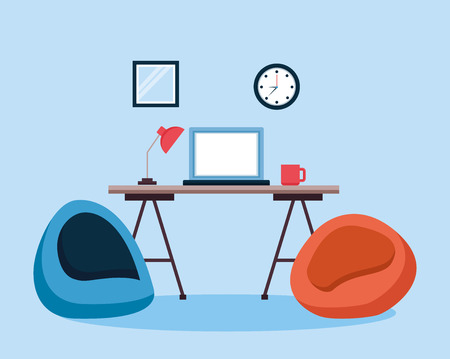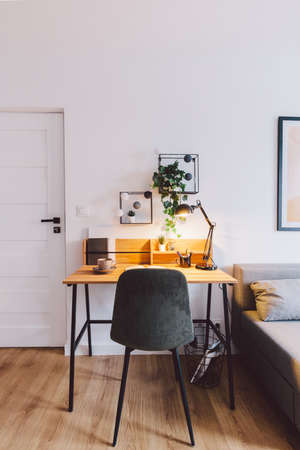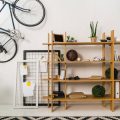Understanding Your Space
Before you can transform your small home office into a productivity powerhouse, it’s crucial to truly understand the space you’re working with. Take a mindful moment to evaluate the room or nook you plan to use. What are its strengths? Maybe natural light pours in during the day, or perhaps the area is blissfully quiet. Identify these assets—they’ll become key features of your remote work success. Next, consider any constraints. Is space tight? Are outlets scarce? By pinpointing both advantages and limitations, you create a clear foundation for thoughtful, functional design choices that help you make the most of every square inch.
2. Prioritizing Ergonomics and Comfort
In a small home office, prioritizing ergonomics and comfort is essential for sustaining productivity and well-being throughout long work hours. Thoughtful choices in furniture and workspace arrangement can make even the coziest spaces feel inviting and efficient. Start by investing in ergonomic essentials that fit your unique space. Adjustable chairs, compact sit-stand desks, and supportive cushions are smart options for maintaining healthy posture. Even small upgrades—like a footrest or a laptop riser—can create a noticeable difference.
Essential Ergonomic Adjustments
| Item | Purpose | Small Space Tip |
|---|---|---|
| Ergonomic Chair | Supports lower back & reduces fatigue | Choose slim-profile designs with adjustable features |
| Laptop Stand/Riser | Keeps screen at eye level to prevent neck strain | Opt for foldable or stackable models |
| Adjustable Desk | Encourages movement; allows sitting & standing | Select compact or wall-mounted versions |
| External Keyboard & Mouse | Promotes natural hand positioning | Look for wireless, space-saving sets |
| Footrest | Improves circulation during long sitting periods | Consider portable, under-desk options |
The American Home Office Mindset
Culturally, Americans value both efficiency and comfort in remote work setups. The trend leans toward blending style with function: think clean lines, neutral colors, and multi-use pieces that enhance both mood and performance. Smart adjustments—like setting up your workspace near natural light or adding a plant—can improve focus while making the area feel less cramped.
Sustainable Well-Being Practices
A successful small home office is not just about the right furniture; it’s about creating habits that support your body during virtual meetings and deep work sessions. Take breaks to stretch, adjust lighting as the day changes, and personalize your space with elements that inspire calm.
By incorporating ergonomic solutions tailored to your available square footage, you pave the way for healthier routines—and remote work success—no matter how limited your space may be.

3. Optimizing for Technology
When adapting your small home office for remote work success, technology becomes your foundation. American remote workers benefit from selecting space-saving tech essentials—think slim laptops, compact wireless keyboards, and all-in-one printers that don’t overwhelm your desk. Prioritize devices with multiple functions and sleek designs to maintain a clutter-free environment. Reliable connectivity is equally vital. Invest in a high-speed internet plan tailored to your household’s needs, and consider mesh Wi-Fi systems to eliminate dead zones. For seamless Zoom meetings and collaboration, choose noise-canceling headsets and HD webcams. By curating tech that fits your space and supports productivity, you set the stage for effective remote work—no matter how limited your square footage may be.
4. Making It Personal Yet Professional
Designing a small home office that feels uniquely yours while staying work-appropriate is a balancing act. Minimalism is key—think clean lines, neutral tones, and uncluttered surfaces. But that doesn’t mean sacrificing personality. Infuse your space with subtle personal touches: a favorite art print, a sleek desk lamp, or a statement mug. These details spark creativity and help you feel at ease, yet don’t distract during video calls.
Tips for Blending Style and Professionalism
| Element | Minimal Design Approach | Personal Touch | Professional Benefit |
|---|---|---|---|
| Wall Art | Simple frames, neutral colors | Your favorite abstract or landscape piece | Creates a calm, sophisticated backdrop for Zoom meetings |
| Desk Accessories | Sleek organizers, hidden storage | A designer pen holder or custom mousepad | Keeps workspace tidy and visually appealing on camera |
| Lighting | LED task lamp, soft white bulbs | A lamp in your preferred shape or finish | Ensures clear lighting for video calls and reduces eye strain |
| Seating | Modern ergonomic chair | Add a textured throw pillow or blanket | Merges comfort with style; looks polished on screen |
Curate Your Zoom Background
Your background says a lot about your professionalism. Keep it simple—avoid busy patterns or cluttered shelves. Opt for a neutral wall with one or two curated items, like a plant or framed print. This approach not only projects confidence but also minimizes distractions for colleagues and clients.
Design Philosophy: Less Is More, But Make It Yours
A thoughtfully designed small home office should reflect who you are without overwhelming the senses. By blending minimal design principles with personalized details, you’ll create an inspiring environment that’s both productive and perfect for any remote meeting.
5. Managing Distractions and Setting Boundaries
When your home office shares space with your living area, distractions can multiply quickly. The key to remote work success in a small home is creating clear routines and dedicated zones—even if you’re working from a corner of your living room or bedroom. Start by establishing a fixed schedule for work hours, breaks, and family time. This structure signals to both yourself and others when it’s time to focus and when it’s okay to unplug.
Use physical cues to define your workspace. A simple rug, a partition, or even a specific chair can help mark the boundary between “work mode” and “home mode.” Let everyone in your household know your work hours, and don’t be afraid to communicate those boundaries kindly but firmly. If possible, set up small rituals—like powering up your laptop at the same time each morning or closing it at the end of the day—to mentally transition between roles.
For those working in especially compact environments, consider noise-canceling headphones or gentle background music to reduce ambient distractions. Keep only essential work items within arm’s reach, and store personal items elsewhere during work hours to minimize temptations. By intentionally separating your spaces and routines, you’ll keep both productivity and peace of mind intact—even in the coziest of homes.
6. Lighting Up Your Workflow
Lighting is more than a design choice—it’s the foundation of a productive small home office. In compact spaces, natural light is your best friend. Position your desk near a window to harness daylight, which not only reduces eye strain but also boosts your mood and energy throughout the workday. When the sun goes down or if natural light is limited, strategic lighting becomes essential. Choose LED desk lamps with adjustable brightness and color temperature to adapt to different tasks and times of day. Layer your lighting: combine overhead fixtures with focused task lights to minimize shadows and glare. Don’t overlook ambient touches—string lights or wall sconces can add warmth without crowding your workspace. By thoughtfully illuminating your small office, you create an environment that enhances focus, lifts spirits, and supports remote work success.


